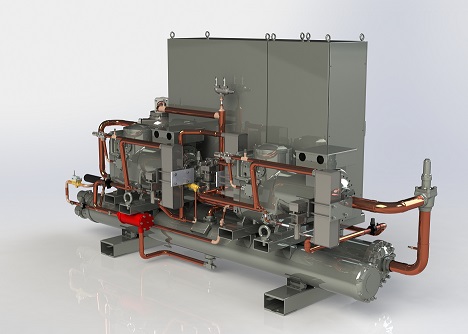IHT™ from ICAX suits many older buildings
IHT™ from ICAX is most efficient when incorporated into new buildings at the planning stage. It works however, on buildings of every scale, especially those designed to have high thermal mass and efficient insulation. It can work well on older buildings as well.
This revolutionary patented technology has been developed over ten years by ICAX Limited to provide on-site renewable energy to heat buildings in winter without burning fossil fuels.
IHT allows gas-free buildings to be designed. This saves the cost of funding a gas supply to a new site, as well as greatly reducing the annual cost of heating, cooling and maintenance.
Elements of IHT™
The essence of IHT is that solar heat can be collected from dark surfaces (like roads, car parks or playgrounds) by an array of pipes embedded beneath the surface in an asphalt solar collector. The heat is stored in an insulated ThermalBank beneath the insulated foundation in the ground and retrieved using a ground source heat pump to heat buildings in winter.
Using smart control technology, the system enhances the performance of Ground Source Heat Pumps. A standard GSHP extracts warmth from the ground and separates this into heat (used to heat a building) and cold (which is returned to the ground). The heat pump, which can yield four kilowatts of heat at a cost of one kilowatt of electricity, is deemed to have a Coefficient of Performance ("CoP") of 4. However, a GSHP needs to pump harder as the ground gets colder as heat is extracted and therefore the CoP of the Heat Pump is likely to fall over the winter season as a whole. Heat is “borrowed” from the ground and creates a thermal “overdraft” in the ground. A GSHP relies on heat gradually migrating back into the thermal overdraft created.
Heat Banking
An IHT system differs from a standard GSHP system in that heat is actively “deposited” in the Thermal Bank in advance of the winter season. This greatly reduces the work required of the heat pump to provide heat to the building the following winter. In engineering terms the seasonal Coefficient of Performance of the heat pump is increased from around 2.6 times to around 5.2 times. This transforms the economics of using a Heat Pump.
IHT™ can save over 60% of carbon emissions compared to using a gas boiler for heating.
Heat Balancing
IHT can also balance heating and cooling demands within a building: ICAX can extract heat from a south facing room in summer and use the heat to warm a swimming pool. ICAX can take "waste heat" from chillers and use it to heat hot water, or store the heat in the ground for space heating in winter. ICAX can collect surplus heat from a tennis court and transfer the heat to a swimming pool.
This radical new thermal storage technology is ready to help you address the issue of global warming in a practical, efficient and proven way. Please email us for further details before you embark on constructing new buildings.
IHT™ from ICAX also suits some refurbishment projects
The principles underlying IHT™ can be used on some refurbishments. There are some circumstances where IHT can recover "waste heat" from air conditioning plant, store the heat in vertical boreholes and recover and recycle the heat in the heating season. A well balanced design can reduce the running cost of air conditioning in summer and heating costs in winter (as well as earning BREEAM points). Please email us with your plans at an early stage so see how ICAX can help.
IHT™ from ICAX can also save energy in older buildings
The principles underlying IHT™ can also be used on older buildings. Older buildings tend to need more heat so there is a larger problem to be addressed and larger potential savings. Older buildings often need more heat because of lack of insulation: there are techniques that can be used to improve the insulation of older buildings without altering their appearance which we address as part of an installation of Interseasonal Heat Transfer.

High Temperature Heat Pumps
The CoP of a heat pump will generally improve the lower the output temperature delivered: therefore the designer aims for a well designed heat emitter system such as underfloor heating where 35°C is sufficient to provide comfortable temperatures. However, if a heat pump is to be used in an existing building with limited heat emitters for the heat load, such as undersized radiators, then it may be appropriate to specify a high temperature heat pump to avoid the disruption that would be caused by refurbishing the heat emitter system.
There are now heat pumps capable of delivering output temperatures of 80°C which is more that sufficient for DHW needs and to warm a building with undersized radiators. Although the CoP will fall if output temperatures are raised to 80°C, a well designed inverter-driven high temperature heat pump with a good control system, including weather compensation, will only deliver 80°C when it is required: otherwise it will modulate the heat pump to deliver lower temperatures – at a higher efficiency – when the heating load is below peak requirements.
See also: Corporate Social Responsibility and opportunities to reduce carbon emissions from existing buildings.
See also: Renewable Heat
See also: Banking on IHT



